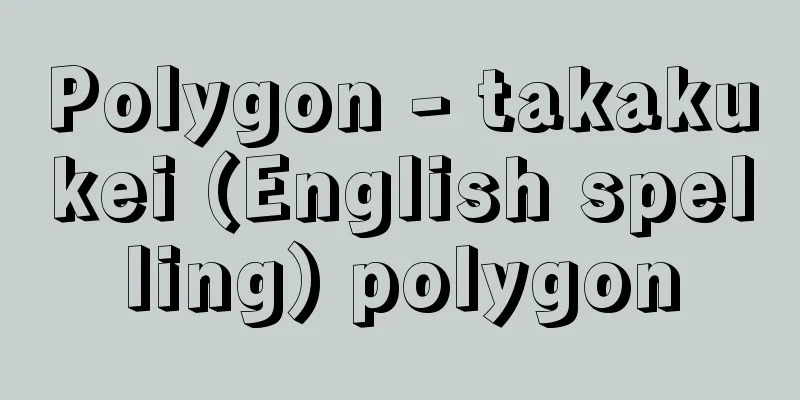Katayama Tokuma

|
Year of death: October 23, 1917 Year of birth: December 20, 1854 (January 18, 1854) Architect of the Meiji and Taisho periods. His birthday is said to be on the 19th. Born in Hagi, Nagato Province (Yamaguchi Prefecture). His father was Bunza and his mother was Haru. In 1867, he joined the Kiheitai (Japanese Army Special Forces), and the following year he served in the Boshin War. After the Meiji Restoration, he searched for his career path, and in 1873, he entered the Engineering School as one of its first students, majoring in architecture. He graduated with first place in 1889, and after working in the Ministry of Public Works, the Dajokan (Grand Council of State), and the Ministry of Foreign Affairs, he was transferred to the Imperial Palace Construction Office in 1897, and became a master craftsman for the Imperial Household Ministry in 1898, and thereafter set out on the path to becoming a court architect. He was acquainted with Yamagata Aritomo from an early age, and it was through Yamagata's good offices that he was transferred to the Imperial Household Ministry. In the 1920s and 1930s, he designed many villas and imperial residences, as well as the Japanese Red Cross Society and the Imperial Museums of Nara and Kyoto. He showed a gentle style that suited the nature of the buildings. In 1906, he was appointed Chief Engineer of the Construction Office of the Togu Palace (now the State Guest House, Akasaka Palace), and was solely responsible for the national project of building a palace that would rival those of Western countries. In 1902, he was promoted to Takumi no Kami, becoming the pinnacle of the Imperial Household Ministry's construction work. In 1906, the Togu Palace was completed. He subsequently designed the Hyokeikan at the Tokyo Imperial Museum, the Takedanomiya Residence, and the Kanagawa Prefectural Office Building, among other buildings. All of these buildings are excellent examples of the elegance of 17th-century French architecture transplanted to Japan. In 1914, he built the Momoyama Imperial Mausoleum, and retired in 1915. In 1916, he received the Grand Cordon of the Order of the Rising Sun, 1st Class. This was the highest decoration that a modern Japanese architect could receive. <References> Onogi Shigekatsu, "Foundation of Style" (Japanese Architecture [Meiji, Taisho, Showa], Vol. 2) (Junichiro Ishida) Source: Asahi Japanese Historical Biography: Asahi Shimbun Publications Inc. About Asahi Japanese Historical Biography |
|
没年:大正6.10.23(1917) 生年:嘉永6.12.20(1854.1.18) 明治大正期の建築家。誕生日は19日とも。長門国(山口県)萩生まれ。父文左,母ハル。慶応3(1867)年奇兵隊に入隊し,翌年戊辰戦争に従軍。維新後進路を模索するが,明治6(1873)年工学寮に第1期生として入学,造家学を専攻。12年第1等の成績で卒業,工部省,太政官,外務省を経て19年皇居御造営事務局に転任,20年宮内省匠師となり,以後宮廷建築家への道を歩む。早くから山県有朋の知遇を得ており,宮内省への転出も山県の口利きによる。20~30年代には多くの離宮,皇族邸館のほか日本赤十字社,帝国奈良・京都両博物館などを設計。建物の性格にふさわしい穏和な作風をみせる。31年東宮御所(現迎賓館赤坂離宮)御造営事務局技監に任じられ,西洋諸国に遜色ない宮殿を目指す国家事業を一身に担う。37年内匠頭に昇進し,宮内省営繕の頂点に立つ。41年東宮御所竣工。こののち東京帝室博物館の表慶館,竹田宮邸,神奈川県庁舎などを設計。いずれもフランス17世紀建築の典雅さをよく日本に移植しえている。大正3(1914)年桃山御陵を造営し,4年退官。5年に勲1等旭日大綬章を受ける。これは近代日本の建築家の得た最高の勲等であった。<参考文献>小野木重勝「様式の礎」(『日本の建築[明治・大正・昭和]』2巻) (石田潤一郎) 出典 朝日日本歴史人物事典:(株)朝日新聞出版朝日日本歴史人物事典について 情報 |
Recommend
Schreibersite (English spelling)
A phosphide with the chemical composition (Fe,Ni) ...
Asset accumulation system - Zaikeiseido
Abbreviation for the Workers' Asset Formation ...
Letter of Inquiry - Chuushinjo
〘noun〙① A form of ancient document from the Middle...
George Cruikshank
1792‐1878 British caricaturist and illustrator. Bo...
Mount Tanigawa
It is one of the peaks in the Mikuni Mountain Ran...
Reggae - Reggae (English spelling)
A type of Jamaican popular music and dance style....
Osseous syndactyly
…The most common location is between the middle a...
Body fluids
Body fluids are the collective term for the liqui...
Zante
…In addition to its official Greek name, the Ital...
Sakai Incident
This was a clash with foreign soldiers that occur...
Republic of Tuva (English spelling)
A republic within the Russian Federation. It was a...
Salmon and Trout Mother Ship - Sakemasubosen
A large fishing vessel that catches salmon and tro...
nevus spilus (English spelling) nevusspilus
...Moles are generally not seen in infants, and t...
Mie
A term used in Kabuki acting and directing. Durin...
Temple name - Ingo
It is the highest honorific given above a Buddhis...




![Aniemachen [Mine] - Aniemachen](/upload/images/67cf3320e7b65.webp)
![Akasaka [town] - Akasaka](/upload/images/67cad09200546.webp)



